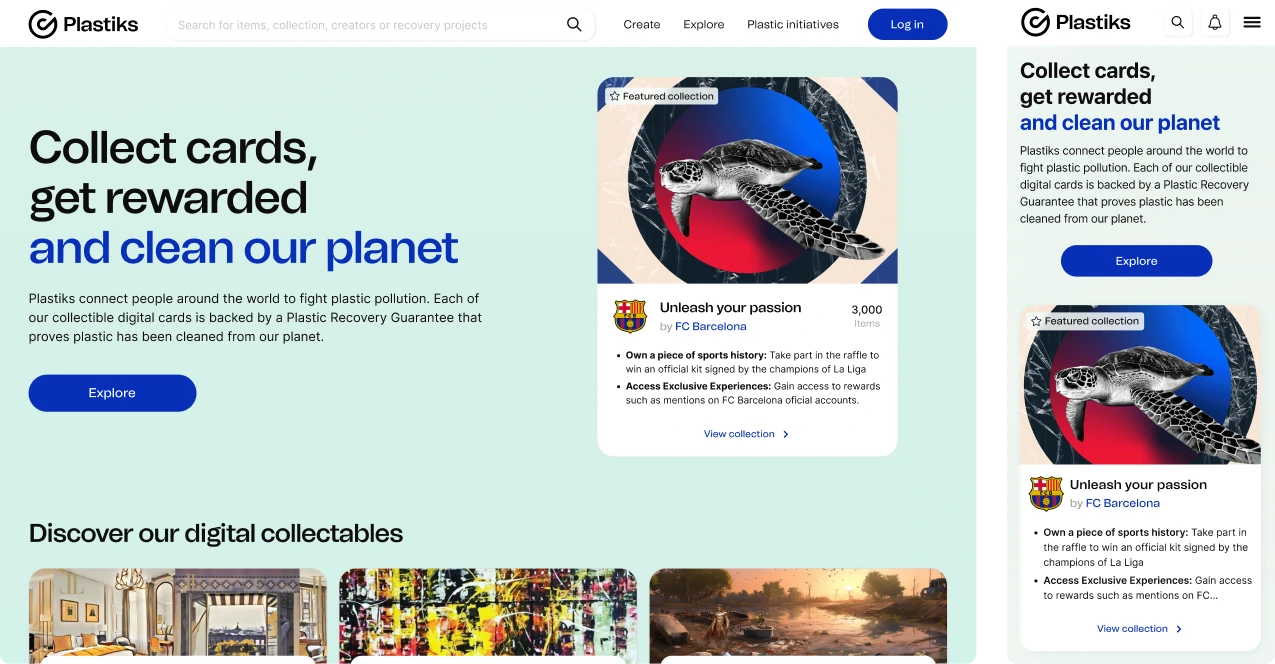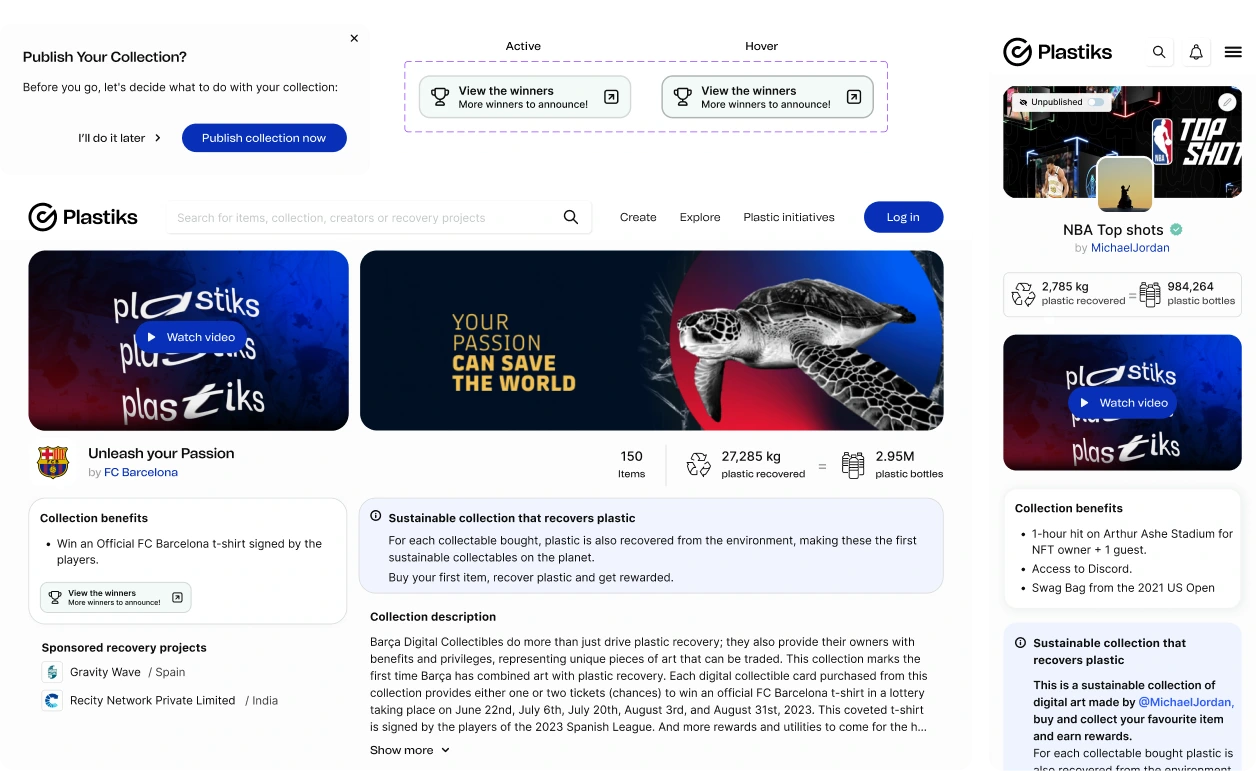Led UX/UI for Plastiks, streamlining onboarding and checkout to boost accessibility. A key F.C. Barcelona collaboration helped recover 27,000+ kg of plastic. During my tenure, Plastiks secured €4M+ in investment, strengthening its market position.

The Sustainability NFT Marketplace merges technology and environmental impact, using NFTs to fund plastic recovery projects. As the lead UX/UI designer, I created a user-friendly platform that made buying NFTs easy, whether with crypto or credit card. This case study highlights the challenges, solutions, and key takeaways from the project.
Our team included a CTO, Product Owner, Project Manager, four developers, a branding designer, and myself as the main UX/UI designer. My role was to design all the interfaces and the design system while advancing the project.
We started with a basic template that included NFTs, collections, users (creators and buyers), and campaigns. My responsibility was to enhance the design based on user feedback, eventually redesigning everything from the homepage to the payment flow.

We focused on making the NFT buying process as simple as possible. Users could purchase NFTs with either a credit card or cryptocurrency—giving flexibility that eliminated friction. The onboarding process was also simplified, as many users were unfamiliar with Web 3.0 concepts like wallets. We conducted research on leading marketplaces like OpenSea and Rarible, improving on their flows by allowing users to create a wallet with just an email or by logging in via Google, Apple, or Facebook.

We applied user testing to the main features to ensure a seamless experience, particularly focusing on onboarding and the checkout process. For instance, the search function was enhanced to make it easy to find specific NFTs or collections, like F.C. Barcelona’s unique campaign.

We worked closely with creators to let them choose which plastic recovery projects their NFT sales would support. A highlight of the project was a successful collection with F.C. Barcelona, which raised enough to recover over 27,000 kg of plastic.
At times, we had a limited budget for testing, but we gathered valuable feedback from eco-conscious users willing to collaborate. One of my key innovations was offering the option to buy NFTs as a guest, removing the need for users to log in and making the process truly frictionless. This feature was especially important for users who wanted to support the cause without having to create an account or keep the NFT, simplifying their contribution.
This project was not only a success but also boosted my confidence to lead UX/UI design in various types of projects beyond NFT marketplaces.

Align your goals with exceptional user experiences.